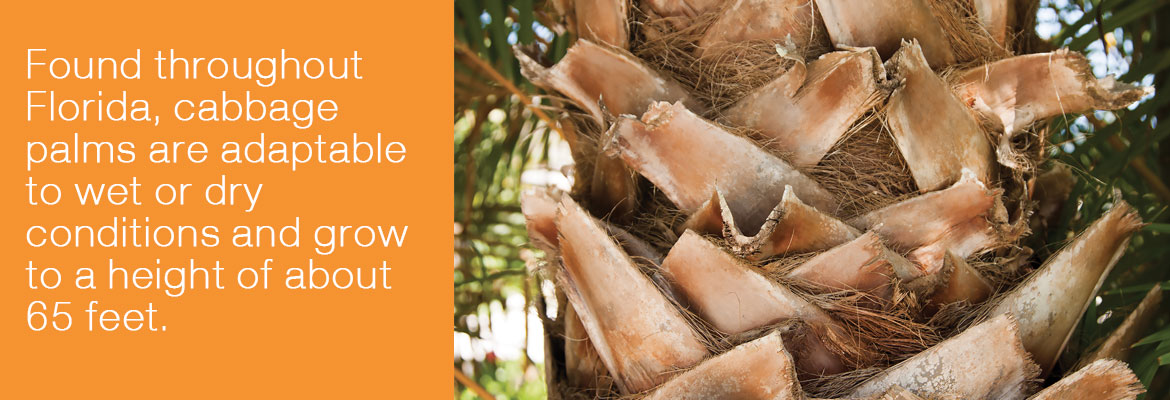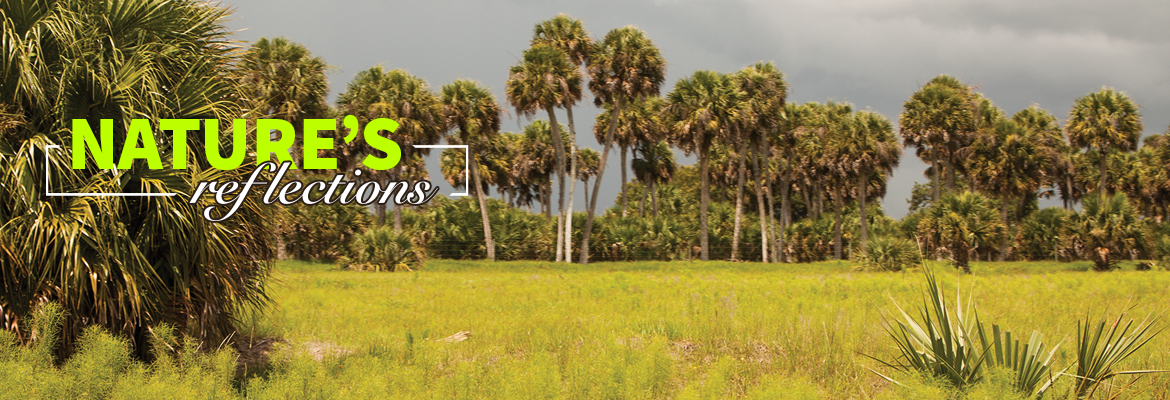Nature’s Reflections – Florida’s Cabbage Palm
Many uses and the heart is considered a delicacy
The cabbage palm (sabal palmetto) was designated the Florida state tree in 1953 thanks to the Federation of Garden Clubs, who convinced the legislature that this palm was representative of all of Florida. The sabal palm, commonly called a “cabbage palm” is the most commonly found palm throughout the state.
One reason for its selection was its history. Early Floridians found a variety of uses for the sabal palm. The leaf bud of the tree provided food, the fibrous trunk was used for shelter materials and the fronds were used for thatched roofs. In fact, Seminole Indians are well known for constructing “Chickee huts” with thatched roofs made from the palm fronds. Chickee is the Seminole word for house, traditionally constructed using cypress logs and thatch leaves woven together with vines or thin ropes.
The leaf bud portion at the tree top is considered a delicacy by many. It is often sold in local restaurants under the name “heart of palm” or “swamp cabbage.”

Additionally, the tree provides food for wildlife. Florida’s black bears enjoy eating the heart of the palm, while the cabbage palm’s fruit, black colored berries, are eaten by gray foxes, squirrels and raccoons. Birds watch for the fruit to reach that “just right” ripened stage for eating. And, butterflies drink their fill of nectar when the small white flowers appear in early summer.
Cabbage palms provide shelter for fox squirrels, raccoons, frogs, lizards and insects. The palm thatch is used in nest building. Cavity nesters, such as flickers and red-bellied woodpeckers carve out homes in its trunk while others hide their nests among the fronds.
These prolific native palms with their fan-shaped fronds are widely used in landscaping. They are an erect tree that grows to a height of about 65 feet. Found throughout Florida, they are very adaptable to wet or dry conditions and transplant easily during any season of the year, although the warm, rainy summer months are best. It is a tree that weathers Florida’s seasons well.
Column & photos by Sandi Staton – sandi.staton@gmail.com
Read the full Nature’s Reflections article in the January 2018 SECO News.






